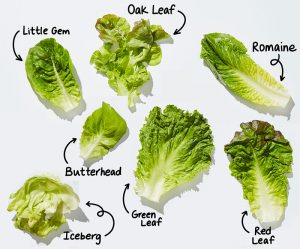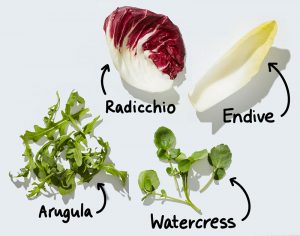How to grow lettuce (and other salad greens)
Robin Gale-Baker, from Sustainable Macleod, discusses growing lettuce. This is one of a series of articles she has written about growing various veggies (see right hand sidebar). She has also written a number of articles about growing various herbs, growing various fruit trees and general growing techniques.
 [Editor: Lettuce comes in a variety of types, including iceberg (tight head), butterhead (loose head), looseleaf (no head) and cos/romaine. I usually grow looseleaf as it is the easiest to harvest leaf by leaf rather than having to harvest the whole plant at the same time. Here is an article about the various types of lettuce and other salad greens, and how to use them.]
[Editor: Lettuce comes in a variety of types, including iceberg (tight head), butterhead (loose head), looseleaf (no head) and cos/romaine. I usually grow looseleaf as it is the easiest to harvest leaf by leaf rather than having to harvest the whole plant at the same time. Here is an article about the various types of lettuce and other salad greens, and how to use them.]
As well as the various types of lettuce, other salad greens include corn salad, rocket/arugula, mustard greens, cress, watercress, mizuna, radicchio, endive, baby spinach and baby silverbeet. Some of these, along with sunflower, kale and peas, can be grown as microgreens. Add in herbs and edible flowers and create salads with a great range of colours, textures and flavours.
Top tips
 Use lettuce seed that is less than a year old.
Use lettuce seed that is less than a year old.- Germinate lettuce seed in the light (i.e. do not cover with soil).
- Keep the seed well watered until rooted.
- Grow in well prepared soil containing compost and nitrogen.
Seed
Lettuce seed is only viable for around year, losing its viability quickly after that. It also needs to be germinated in the light and kept really moist. Any drying out will kill the seed. Spread the seed onto a firmed, watered seed bed, press the seed onto the surface, and check every day that it is still moist. Water well if not until the seed has germinated and is rooting into the soil bed. After this, keep the seedlings damp but not wet. When transplanting seedlings, water in with Maxicrop or Seasol to reduce shock.
Position
Lettuce germinates best at temperatures around 21C but poorly below 10C and above 26C. Plant year round.
Other salad greens prefer warm days and cool evenings, and should therefore be grown in partial shade during the summer but in partial sun during spring and autumn.
Soil preparation
Lettuces and other salad greens grow in any good, well drained soil but the soil should also be capable of retaining moisture. Dig the soil over so it is loose and weed free, and incorporate compost, nitrogen (e.g. poultry manure) and potash (potassium) in the top layer for best results. The pH should be 6-6.8.
Planting and spacing
Lettuce and other salad greens can be sown either directly or in punnets for later transplanting. If sown directly, they will need thinning.
Spacing for lettuce depends on the variety, and can vary from 10cm to 45cm, so follow the instructions on the seed packet. Ditto other salad greens. All salad greens may need thinning but you can use the thinnings in your salads.
Some lettuces are called ‘cut and come again’, meaning that you can harvest the outer leaves while leaving the central growing tip in place.
Watering
As lettuces are shallow rooted, they need regular watering or they will become tough and bitter. Water regularly every second day in summer and keep moist at all times to prevent bolting. Other salad greens benefit from a similar regime.
Fertilising
Lettuces are heavy feeders. Spray with 1/2 strength Maxicrop or Seasol if necessary every 2 weeks but be aware that producing soft leaf brings hordes of snails and slugs so you can skip this if your soil is well prepared, as discussed above.
Pest and diseases
Snails, slugs, earwigs and caterpillars are the main visitors.
Necrotic yellow virus, which is transmitted by aphids from milk thistles, will kill lettuces. It is vital to weed out milk thistles for a considerable distance from where lettuces are planted. This may include ‘the other side of the fence’ or on the nature strip, or any weedy area.

Seems easy. I think I might give it a try.